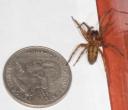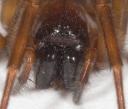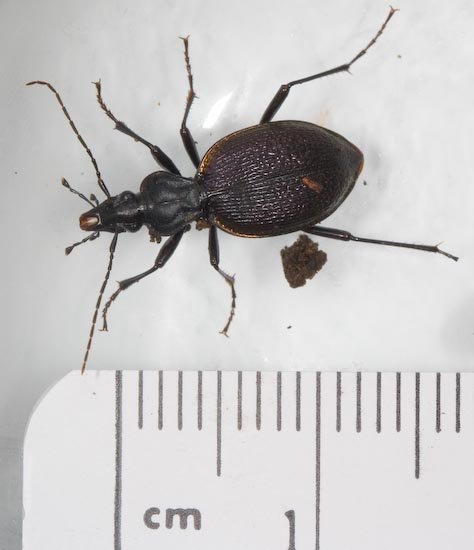
Unidentified Beetle
Scaphinotus sp.
I noticed this beetle crawling for cover when I lifted up a piece of plastic in the backyard. The plastic had been there since last summer. This was the only one I noticed with the iridescent edging. It caught my eye. The mouth parts look pretty intimidating close up.
Thanks to the helpful comments here and at bugguide.net, I now know the genus. It does not appear to be the same as Scaphinotus angusticollis, which I believe is pretty common around here. I am not sure what species it is. An on-line Canadian reference with the Ground Beetles of British Columbia lists six other species in the genus, so I am guessing it’s one of those.




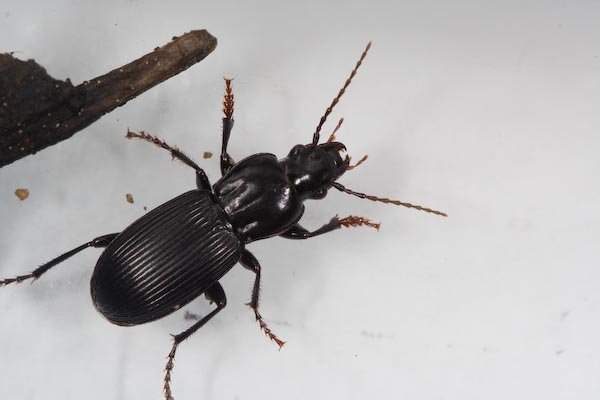
Unidentified Beetle
Pterostichus sp.
I found this beetle, and several others like it, scurrying to find cover when I lifted up a piece of plastic in the backyard. It definitely seemed to like burrowing down in the dirt to get away.
Any help with identification of this beetle would be appreciated.
Thanks to the helpful folks at bugguide.net, I know the genus of this beetle. However, it was also mentioned that Alaska has 35 species in this genus. Perhaps at a later date, the species can be determined, but for now, I’ll be happy with just the genus.

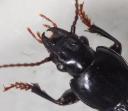
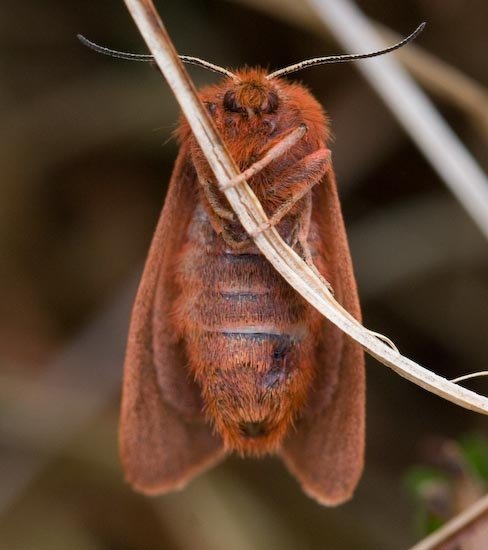
Ruby Tiger Moth
Phragmatobia fuliginosa
I am not positive about this identification, but based on what I looked at on the Moth Photographers Group website, this seems correct to me. I first noticed it crawling around in last years dead sedges, but once it realized I had noticed it, it stopped moving. I handled it a little bit as I was getting photos, and it never tried to fly, or really even move much.
Thanks to Ethan Kistler via bugguide.net for the help. I had originally thought this might be a Brown Tiger Moth, but Ruby Tiger Moth does seem to be a better fit.
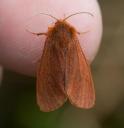
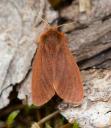


Unidentified Insect:
I noticed this little creature crawling around on me after I had been pulling some weeds. I was mostly pulling grass, so that’s what I think it had been on prior to me. It is quite small, less than 1cm in length (actually, probably less than 5mm in length). The color and pattern was quite striking, so I decided to take some photos. Although it was capable of flying (and did so a couple of times while I was trying to take pictures), it did not seem inclined to fly much. It preferred walking. Even after sitting in the refrigerator for awhile, it was still moving (quickly for its size) and rarely stopped. It was so small that I was using the 1-5x macro lens which does not have automatic focus, so I found it quite challenging. One thing I noticed when looking at the pictures is the particularly long protrusion from it’s mouth area. This can be seen in the large photo above, but is best seen in the photo where the insect appears to be cleaning its antenna (click on thumbnail below).
I have no idea what this insect is, so I’ve submitted it to bugguide.net with hope of help.

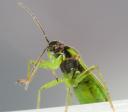
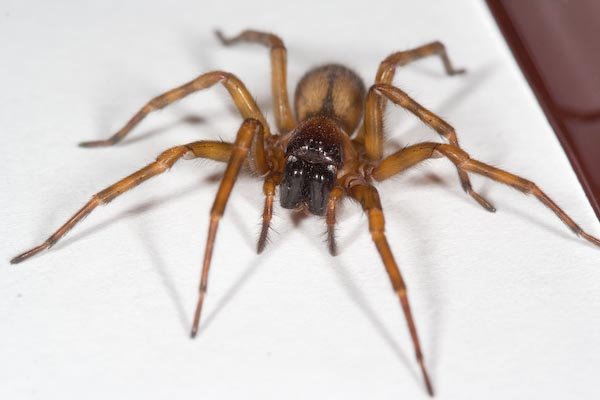
Hacklemesh Weaver
Callobius pictus
Thanks to Eric Eaton via bugguide.net for the family identification. The name ‘Hacklemesh Weaver’ is for the family group, not the individual species (which does not seem to have a common name).
Thanks to Jozef Slowik via Nearctic Arachnologists’ Forum for the species identification. He has written a paper on a survey of spiders on Chichagof Island (pdf) that I suspect will be helpful for figuring out the species of spiders I might find in the future.
I noticed this spider crawling down the side of a trash box while working on my computer this evening. It was a little distracting to see something large and dark slowly moving out of the corner of my eye. However, with this project as motivation, I took advantage of the situation and put it in a jar. It was pretty active, so I tried the refrigerator trick and after a few minutes it was far less active. I placed in a glass baking pan with paper on the bottom to take the pictures. At first its legs were all pulled in tight, but eventually it spread them out a little bit. After a few minutes it warmed up again and started moving around. Let’s just say it can be a little startling to be looking through the camera trying to take a close up of a spider’s face and then have it come scurrying rapidly toward you(r lens).
I have no idea how to identify spiders at this point, so I’ve submitted the photo to bugguide.net and the Nearctic Arachnologists’ Forum and will hope for some help.
